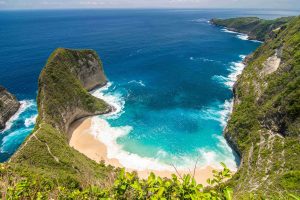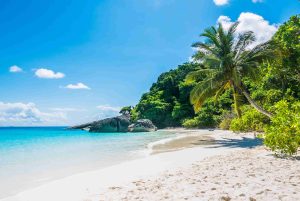East Java is a land where raw natural beauty meets deep-rooted cultural heritage. Tucked away from the bustling crowds of Bali and Jakarta, this vast province offers a treasure trove of experiences for those who crave more than just a typical vacation. Here, ancient volcanoes spew mist into the sky, hidden waterfalls thunder through lush jungle canyons, and traditional villages carry the wisdom of centuries past.
Whether you’re a nature enthusiast seeking adventure or a cultural traveler yearning to connect with authentic Indonesia, East Java delivers with epic landscapes and soul-stirring moments. In this article, we’ll explore ten unforgettable things to do in East Java that will leave you inspired, awestruck, and eager for more.
10 Epic Things to Do in East Java for Nature and Culture Lovers

Whether you’re a backpacker seeking adrenaline-fueled adventures or a cultural traveler longing to connect with the heritage of Java, East Java has something extraordinary for you. Here are ten epic things to do in East Java that celebrate both natural wonders and cultural treasures—crafted to ignite your wanderlust and deepen your appreciation for this rich region.
1. Witness the Sunrise at Mount Bromo
Mount Bromo is arguably East Java’s most iconic natural attraction. Watching the sunrise here is nothing short of magical. Located in the Bromo Tengger Semeru National Park, this active volcano is part of a dramatic landscape of volcanic craters, black sand plains, and surreal mists that roll in with the early morning light.
What makes the experience truly unforgettable is the panoramic view from Penanjakan Hill, where travelers gather pre-dawn to see the first rays of sun illuminate Mount Bromo, Mount Batok, and the towering Semeru in the background. After sunrise, you can descend to the Sea of Sand and hike up the volcano’s crater rim to peer into the steaming abyss below.
Tip: Stay in Cemoro Lawang for easy access to sunrise viewpoints and explore nearby cultural traditions of the Tenggerese people.
2. Conquer the Blue Fire and Acid Lake of Mount Ijen
Mount Ijen is one of the most otherworldly places on Earth. Located near Banyuwangi, this active volcano is famous for two rare phenomena: its electric-blue flames and its turquoise acidic crater lake—the largest in the world.
The trek to the summit starts around midnight, allowing you to witness the mesmerizing blue fire caused by ignited sulfuric gas before sunrise. As dawn breaks, the surreal view of the crater lake surrounded by cliffs is revealed, often accompanied by sulfur miners carrying baskets down the slopes—a glimpse into one of the toughest jobs on the planet.
This is an experience that combines raw natural beauty with the poignant reality of local labor culture.

3. Discover the Ancient Majesty of Trowulan, the Lost Capital of Majapahit
For culture lovers, a visit to Trowulan is essential. This humble village near Mojokerto was once the capital of the powerful Majapahit Empire, which ruled much of Southeast Asia in the 13th to 15th centuries. Today, the site is dotted with archaeological ruins, ancient temples, and traditional brick structures that offer a glimpse into one of Java’s most influential historical periods.
Notable sites include Candi Bajang Ratu (a beautiful red-brick gate), Candi Tikus (a ritual bathing place), and the Majapahit Museum, which houses relics, inscriptions, and artifacts from the kingdom’s heyday. The area is often quiet, making for a meditative cultural journey through history.
Also read: Top Orangutan Sanctuaries in Indonesia You Need to Visit
4. Explore the Colorful Village of Jodipan in Malang
East Java isn’t just volcanoes and temples—it also bursts with creativity and color. One such example is the vibrant village of Jodipan in Malang. Once a drab riverside slum, this neighborhood was transformed into a rainbow-colored mural village through a community-driven art project.
Walking through Jodipan is like stepping into a 3D painting, with colorful rooftops, artistic alleyways, and charming locals welcoming you to take photos or learn about the transformation. The area is not only Instagram-worthy but also a testament to how art and social enterprise can uplift communities.
Pair this with a visit to the nearby Kampung Biru Arema (Blue Village) and Kampung Tridi (3D Village) for a full day of cultural immersion in urban creativity.
5. Marvel at Tumpak Sewu, the Niagara of Indonesia
Tumpak Sewu Waterfall, located in Lumajang, is often dubbed “the Niagara Falls of Indonesia” due to its massive horseshoe shape and powerful cascade. Surrounded by lush jungle and towering cliffs, the waterfall tumbles 120 meters into a hidden basin that feels like a prehistoric paradise.
Reaching the base of Tumpak Sewu involves a thrilling trek down bamboo ladders and slippery paths, but the reward is a jaw-dropping view that few places in Southeast Asia can match. Combine it with a visit to Goa Tetes, a nearby cave system with natural springs and mini-waterfalls.
This natural wonder is a dream for nature lovers, photographers, and adventurers.
6. Unwind on the Untouched Beaches of Banyuwangi
East Java may not be as famous as Bali for beaches, but Banyuwangi holds some coastal treasures that remain delightfully uncrowded and pristine. Red Island (Pulau Merah) is a favorite, offering scenic sunsets, beginner-friendly waves for surfing, and a peaceful beach town vibe.
Further afield is Green Bay (Teluk Hijau), a hidden paradise accessible via short jungle trek or boat ride. With turquoise waters, fine white sand, and jungle backdrops, it’s the kind of beach that makes you feel like you’ve found a secret world.
Banyuwangi’s coastlines combine natural serenity with cultural hospitality, especially among the Osing people—the region’s indigenous ethnic group.
7. Visit Madakaripura Waterfall, the Legendary Meditation Site
Located near Probolinggo and often combined with a Bromo tour, Madakaripura Waterfall is steeped in both natural beauty and myth. The waterfall drops from towering cliffs into a narrow canyon, creating a dramatic and spiritual atmosphere.
According to legend, this was the meditation site of Gajah Mada, the mighty prime minister of the Majapahit Empire, who vowed never to rest until the entire archipelago was unified. Today, the site continues to inspire awe and reflection, especially as you walk through the shallow river beneath cascading water walls to reach the main fall.
Be prepared to get wet, and embrace the feeling of being enveloped in nature’s embrace.
8. Take a Scenic Train Ride Through Rice Fields and Mountains
One of the best ways to experience East Java’s landscapes is from the window of a train. The route from Surabaya to Banyuwangi (via Malang or Jember) is particularly scenic, offering views of lush rice paddies, dense forests, rivers, and distant mountains.
Traveling by train is not only budget-friendly but also gives you an authentic slice of local life. You’ll share the carriage with families, students, and vendors, all adding to the richness of the journey.
For a cultural traveler, this is more than transport—it’s immersion into the daily rhythms of Javanese society.
9. Experience Local Life in Traditional Villages
If you’re seeking connection beyond tourist attractions, East Java has many traditional villages that welcome visitors to engage with local life. The Tenggerese around Bromo, the Osing in Banyuwangi, and the Javanese farmers near the Ijen Plateau all offer unique insights into the region’s ethnic and spiritual diversity.
Participate in rituals, learn how to make herbal jamu (traditional medicine), cook local dishes, or simply sit down with elders to hear stories of generations past. These encounters bring human depth to your travel and foster a richer understanding of Indonesia’s cultural mosaic.
Many homestay programs and cultural tours are available if you arrange in advance through local tourism offices or NGOs.
Also read: Top 10 Lombok Hostels for Digital Nomads and Remote Workers
10. Climb Mount Semeru, Java’s Tallest Volcano
For the ultimate East Java adventure, climb to the summit of Mount Semeru, the highest volcano on Java Island at 3,676 meters above sea level. Known as Mahameru (the Great Mountain), Semeru is a sacred peak that has drawn hikers, pilgrims, and poets for centuries.
The hike is strenuous, usually taking 2–3 days roundtrip, but the views are beyond rewarding. From the summit, you can see clouds beneath you, Mount Bromo in the distance, and the plume of smoke that Semeru constantly exhales.
Camping at Ranu Kumbolo Lake on the way up is a spiritual experience on its own, with starlit skies and mirrored water reflections. This is a bucket-list trek for serious hikers and those looking for physical and spiritual achievement.
Final Thoughts
East Java is a land of contrasts and connections—where ancient traditions meet volcanic drama, where waterfalls roar beside meditative silence, and where untouched beaches kiss deeply spiritual highlands. It offers a different kind of travel story—less polished, more immersive, and profoundly rooted in place and people.
Whether you’re hiking above the clouds, wandering through historical ruins, or sipping coffee in a quiet village, East Java invites you not just to see, but to feel. It’s the kind of place that doesn’t just impress, but transforms.
Pack your curiosity, your hiking shoes, and your sense of wonder. East Java is calling, and these ten epic experiences are only the beginning.

Alfath Dewantara is the manager of Jungle Inn Hotel in Bukit Lawang and a leading expert in Bukit Lawang eco-travel. With years of experience in sustainable tourism, he is dedicated to preserving the region’s rich biodiversity while providing authentic jungle experiences for visitors.




